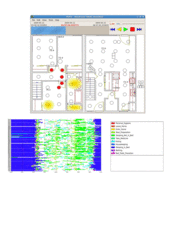Highlight
Smart Environment Infrastructure for Resident and Environment Modeling
Achievement/Results
The US and world populations are aging quickly. By 2040, 23% of the US population will be 65+ and over 11 million will suffer from dementia. Most people want to stay at home, yet those who need special care often must leave home to meet clinical needs. Smart environment technologies can assess and support the ability of older adults to perform Activities of Daily Living at home, thereby extending the time they can live in their own homes. Supporting “aging in place” results in improved quality of life for the individuals and their caregivers and saves money for the individuals, their families, the state, and the nation.
IGERT trainees have participated in constructor a research database infrastructure containing labeled data from multiple smart homes. To date, we have collected sensor data in two on-campus apartment testbeds, two homes of older adults who are experiencing dementia, and three apartments as part of an assisted care facility. We have annotated data collected for fourteen residents with the activities they performed throughout a multi-month stay in the environments. We have made all of these annotated data sets available to the community through our project web page.
In addition to collecting and annotating data, we have also designed algorithms to 1) discover frequent sequence patterns that may represent activities to recognize and track, 2) automatically recognize known activities from labeled training data (these algorithms are robust even for multiple residents and interwoven activities), and 3) transfer learned activity models to new spaces and residents in order to boost learning and minimize the requirement for collected, annotated data in new spaces.
Our recognition algorithms average 85% accuracy using 3-fold cross validation over all of the testbeds, for an average of 10 activities in each environment. Our on-campus testbeds are also used for short-term studies that assess memory performance and cognitive function of older adults and that test various technologies for automated prompting and memory interventions. Our transfer learning algorithms boost recognition accuracy in new environments by at least 10%.
Address Goals
Our work in transferring learned models between homes has changed the direction of research from learning about each environment and resident to learning about commonalities in human activities. This new perspective and approach to human activity modeling will facilitate greater learning power and more practical dissemination of the technologies to the marketplace.






